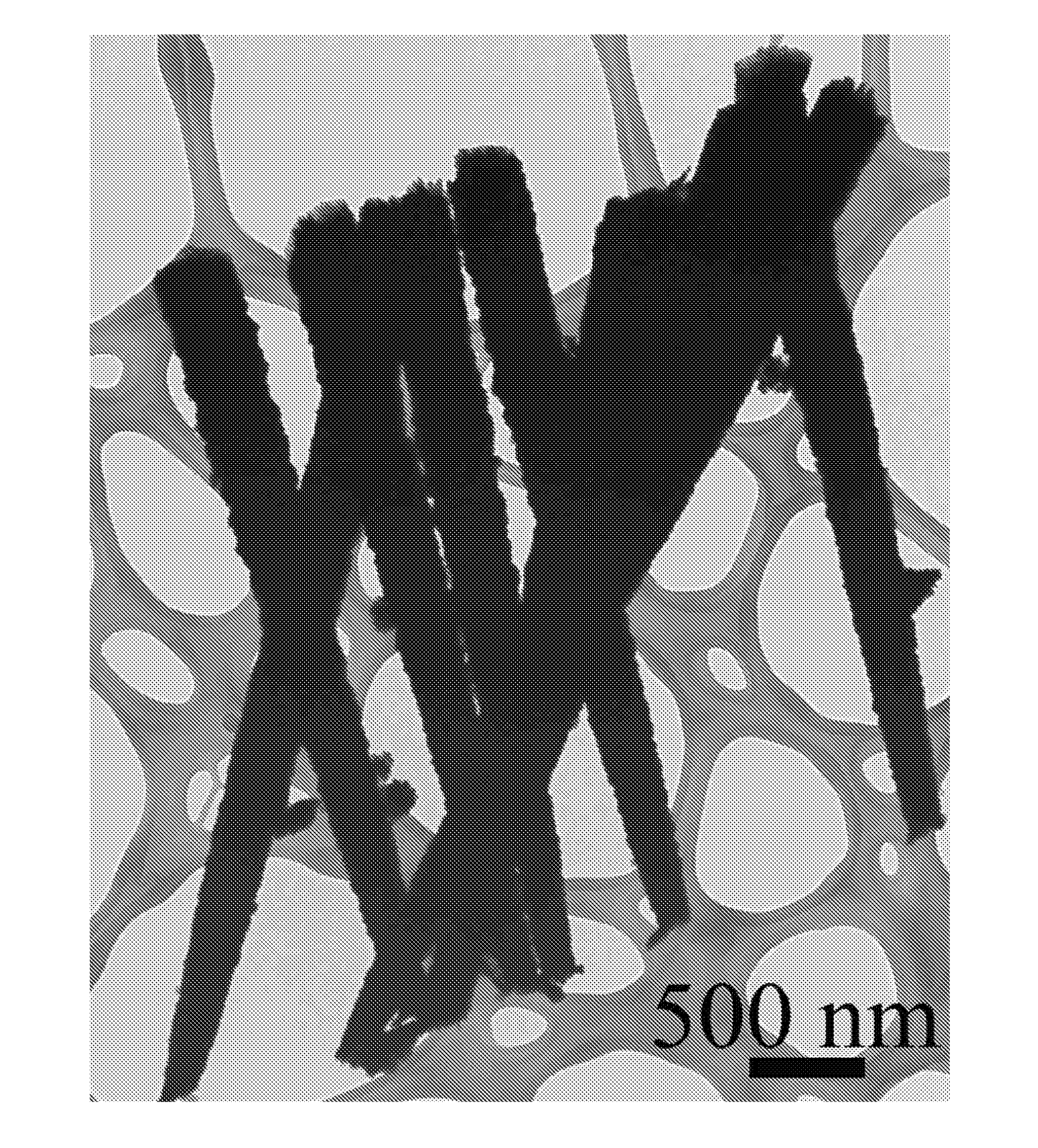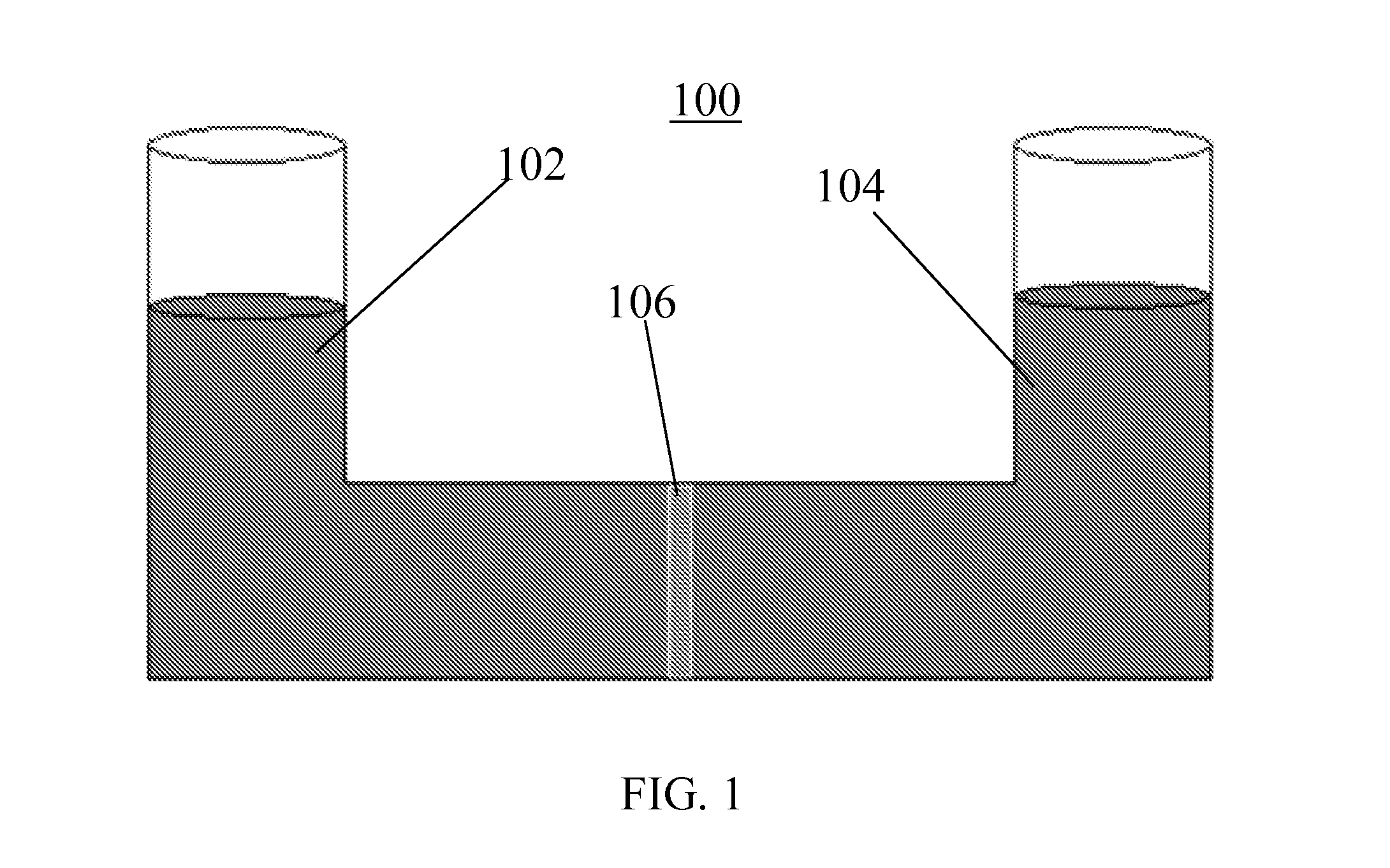Surfactantless metallic nanostructures and method for synthesizing same
a technology of metallic nanostructures and nanoparticles, applied in the field of nanotechnology, can solve the problems of low efficiency and high cost of conventional pemfcs, low efficiency of pemfcs, and cathodic overpotential
- Summary
- Abstract
- Description
- Claims
- Application Information
AI Technical Summary
Benefits of technology
Problems solved by technology
Method used
Image
Examples
Embodiment Construction
[0040]The following detailed description of certain embodiments of the present invention will be made in reference to the accompanying drawings. In describing the invention, explanation about related functions or constructions known in the art are omitted for the sake of clearness in understanding the concept of the invention, to avoid obscuring the invention with unnecessary detail.
[0041]A method for synthesizing a nanostructure, i.e. a nanowire, and compositions derived from such a method, is provided. Specifically, the method provides a synthesis of metallic nanowires, avoiding use of surfactants, electrochemical equipment, toxic reaction media, and physical vapor deposition techniques. Further, the method utilizes environmentally friendly solvents, such as alcohols or water, and is performed under ambient conditions. The method employs a U-tube double diffusion vessel to prepare high-quality, single crystalline, metallic nanowires. The diameter of the nanowires is reliably contr...
PUM
| Property | Measurement | Unit |
|---|---|---|
| diameter | aaaaa | aaaaa |
| particle size | aaaaa | aaaaa |
| pore sizes | aaaaa | aaaaa |
Abstract
Description
Claims
Application Information
 Login to View More
Login to View More - R&D
- Intellectual Property
- Life Sciences
- Materials
- Tech Scout
- Unparalleled Data Quality
- Higher Quality Content
- 60% Fewer Hallucinations
Browse by: Latest US Patents, China's latest patents, Technical Efficacy Thesaurus, Application Domain, Technology Topic, Popular Technical Reports.
© 2025 PatSnap. All rights reserved.Legal|Privacy policy|Modern Slavery Act Transparency Statement|Sitemap|About US| Contact US: help@patsnap.com



